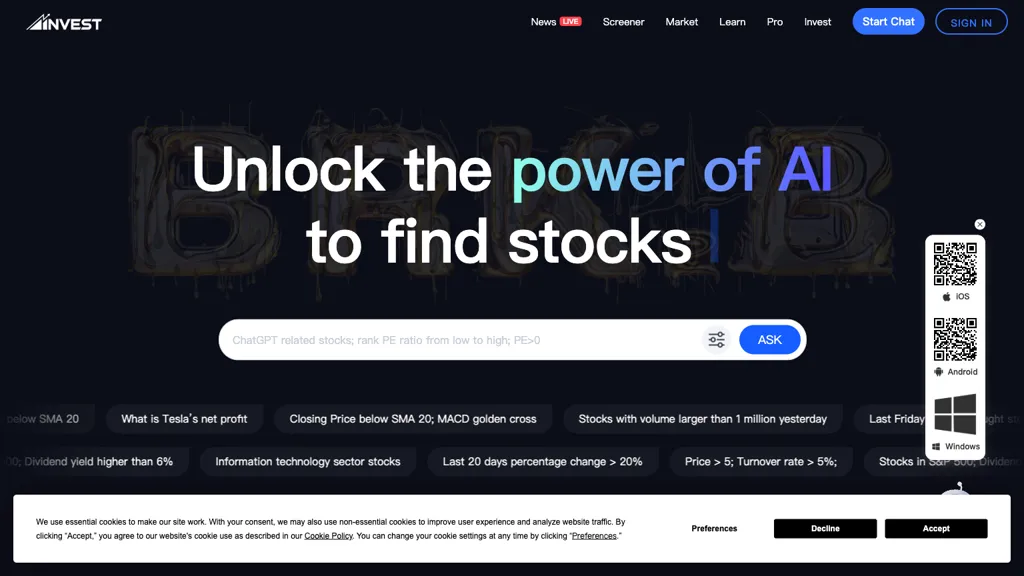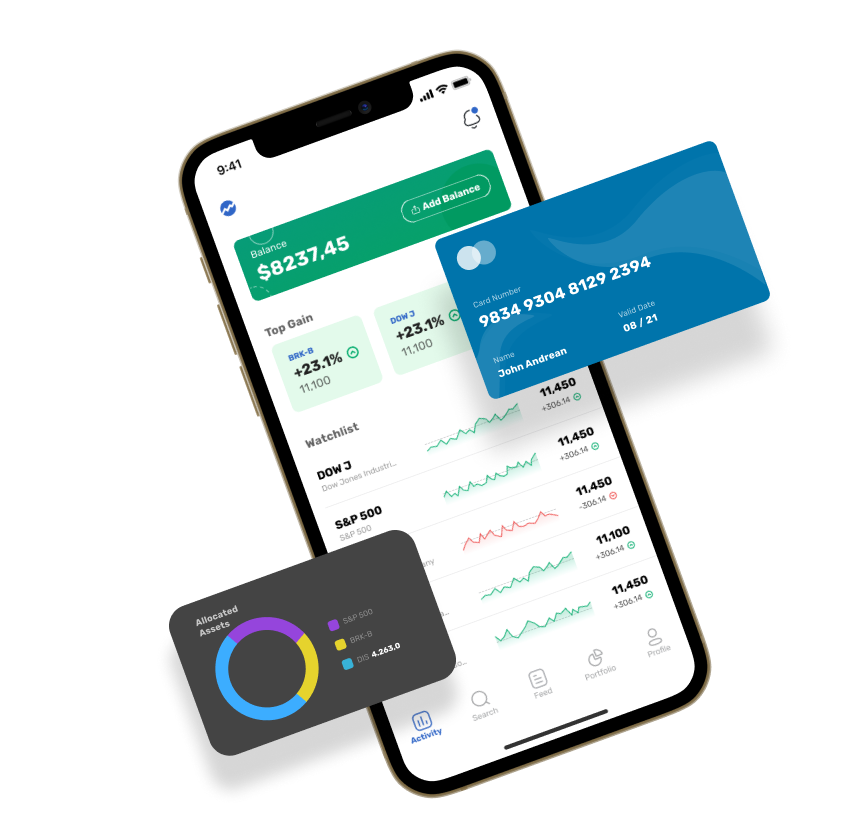To ensure that the platform you choose is able to provide reliable information and forecasts, it is essential to evaluate the accuracy and efficiency of the tool. These are the top 10 tips to analyze these platforms accurately:
1. Backtesting Results
What to Watch Out For Check if the program allows backtesting. This allows you to evaluate the performance of predictions based on historic data.
What is important When comparing the AI model's predictions with actual historical results Backtesting confirms its accuracy.
Look for platforms which allow users to modify backtesting parameters, such as time periods and asset types.
2. Real-time Performance Monitoring
What to look out for What to look for: Examine the performance of the platform under real-time market conditions.
Why it Matters Real-time performance of a platform is a more accurate indicator than just past backtesting.
Tips: You can make use of an account demo, or an evaluation version of the software to keep track of the real-time movement and then compare it with your predictions.
3. Prediction Error Metrics
What to look for Analyze metrics like Mean Absolute Error (MAE) or Root Mean Squared Error (RMSE), or R-squared to determine prediction accuracy.
Why it's Important: These measures provide a quantifiable measure of how closely predictions correspond to the actual results.
Tip: Platforms which openly provide these metrics are typically more transparent and reliable.
4. The Winning Rate and the Success Ratio
What to Look For Look for the platform's win rate (percentage of correct predictions) and the success rate (profitability of trades based on predictions).
Why It Matters Why it matters: A high winning rate and success ratio indicate better predictive accuracy and potential profitability.
TIP: Beware of platforms that claim untrue winning rates (e.g., 90 %+), since there is no perfect system.
5. Benchmarking Against Market Indices
What to look for: Compare the platform's predictions and results to major market indices, like S&P 500 or NASDAQ.
What's important: This will help you find out if your platform has outperformed, or underperforms, the overall market.
Tips: Don't just seek out short-term gains but also a consistent performance over a long time.
6. Consistency on Market Conditions
What to watch out for What is the performance of the platform in different market conditions.
The reason it's important A strong platform works effectively in every market, not only those with favorable conditions.
TIP: Test the forecasts of the platform during volatile periods and market crashes.
7. Transparency in Methodology
What to Watch Out For Know AI models algorithms, techniques, and models (e.g. reinforcement learning, neural network).
What's important Transparency lets you assess the scientific and technical rigor of a platform.
Avoid platforms which use "black-box" models which do not provide a rationale for how predictions are made.
8. User Reviews and Tests by Independent Parties
What to Look for Review reviews from customers and independent tests, or third-party assessments.
Why It's Important: Independent reviews, testing and evaluations provide unbiased and unbiased insight on the platform accuracy and performance.
Review user comments on forums such as Reddit copyright and financial blogs.
9. Risk-Adjusted Returns
What to look out for You can measure the performance of your platform with risk-adjusted metric such as Sharpe Ratio or Sortino Ratio.
Why it is Important: This measure measures the risk taken in order to realize the desired returns. It offers the most complete picture of the effectiveness.
Sharpe Ratio is a good indicator of returns adjusted for risk.
10. Long-Term Track Record
What to look for How to evaluate the performance of the platform over a period of time (e.g. 3-5 years).
What's important The long-term performance is a much better indicator of reliability compared to short-term results.
Do not use platforms that only showcase results that are short-term or cherry-picked.
Bonus Tip: Try it with a Demo Account
Demo accounts and free trials permit you to test the platform's predictions in real-time without risking actual money. It allows you to see the accuracy of predictions and their performance.
By following these tips you can assess the accuracy as well as efficiency of AI platforms for stock analysis and prediction. Pick one that's compatible with your needs for trading and risk tolerance. Remember that no trading platform is perfect, and the best strategy is to mix AI insights with personal research. See the recommended article source for site advice including best ai stock trading bot free, best ai trading software, trading ai, ai investment platform, ai trade, trading with ai, ai trading, ai investing app, best ai stock, investment ai and more.

Top 10 Tips On Risk Management Of Ai Trading Platforms That Predict/Analyze Stock Prices
Risk management is a crucial element of any AI trading platform for predicting or analyzing stocks, as it helps protect your investment and limit potential losses. A platform with robust tools for managing risk will help navigate the volatile market and enable you to make educated choices. Below are the top 10 tips for assessing the capability of risk management in these platforms:
1. Review Stop-Loss and Take-Profit Features
A level that is customizable: You must be able customize the levels of take-profit and stop-loss for individual trades and strategies.
Make sure you are able to use trailing stops. These automatically adjust when the market shifts to your advantage.
You should check whether there are any stop-loss options that will guarantee your position to close at the designated amount, even when the market is volatile.
2. Measure Positions Tools
Fixed amount: Make sure the platform permits you to determine the size of your position based on the fixed amount of money.
Percentage of your portfolio: See whether you can establish position sizes in percentages of your portfolio total to control risk in a proportional manner.
Risk-reward: Find out if your platform allows you to determine risk-rewards for each trade or strategy.
3. Look for Diversification support
Multi-assets trading: Make sure that the platform can support trading across a variety of asset classes (e.g. ETFs, stocks options, forex, etc.) for diversification of your portfolio.
Sector allocation check to determine what tools are that allow for monitoring and managing sector exposure.
Geographic diversification - Check that the platform allows the ability to trade on markets across the world. This will allow you to diversify geographical risk.
4. Review leverage control and margins.
Margin requirements: Ensure that the platform discloses clearly any limitations on margins when trading leveraged.
Check if your platform allows you set leverage limitations to limit the risk of exposure.
Margin calls - Examine to see if your platform notifies you of margin calls in a timely manner. This will help prevent liquidation.
5. Evaluation of Risk Analytics and Reporting
Risk metrics: Ensure that the platform provides key risk metrics (e.g., Value at Risk (VaR), Sharpe ratio drawdown, Sharpe ratio) to your portfolio.
Scenario analysis: Verify that the platform enables you to test different scenarios of the market to determine the risks.
Performance reports: Make sure the platform offers you comprehensive reports on performance, including returns that are risk-adjusted.
6. Check for Real-Time Risk Monitoring
Portfolio monitoring - Make sure that the platform you choose offers real-time monitoring to ensure your portfolio is protected.
Notifications and alerts. Check if the platform offers real-time notification of risk-related events.
Risk dashboards: Make sure the platform has customizable risk dashboards to give you a complete view of your profile.
7. Evaluation of Backtesting and Stress Testing
Stress testing. Check that your platform allows you to test your portfolio or strategy in extreme market circumstances.
Backtesting: Make sure that the platform permits backtesting strategies that are based on past data in order to assess risk and performance.
Monte Carlo Simulators: Verify whether the platform uses Monte Carlo models to model possible outcomes and assess risks.
8. Evaluation of Compliance Risk Management Regulations
Check that the platform satisfies the requirements for regulatory compliance (e.g. MiFID II regulations in Europe, Reg T regulations in the U.S.).
Best execution: Check if the platform adheres to the highest standards of execution, and ensures that trades are executed at the highest available price to minimize the chance of slippage.
Transparency: Make sure that the platform offers clear and transparent disclosures of the risks.
9. Examine the parameters of risk that are user-controlled.
Custom Risk Rules: Ensure that you have the ability to create custom rules for risk management (e.g. the maximum amount of loss per day, a certain size of a tradable position).
Automated Risk Controls Find out whether the platform has the capability to enforce risk management policies in accordance with predetermined parameters.
Manual overrides - Check to see if your platform allows you to manually override automated risk control.
Study Case Studies, User Feedback, and Case Studies
User reviews: Examine user feedback and assess the effectiveness of the platform in managing risk.
Case studies Look up cases studies or testimonials that show the ability of the platform to control the risk.
Forums for communities Find out if there's an active community of traders who share tips and strategies for risk management.
Bonus Tips
Trial period: Make use of a no-cost demo or trial to test the capabilities of the platform for managing risk in real-world scenarios.
Support for customers: Ensure whether the platform offers the best support to issues or questions relating to the management of risk.
Educational resources: Discover if your platform offers tutorials or educational materials which explain risk management strategies.
By following these tips you can determine the capabilities of an AI software for analyzing and predicting stocks to control risk. This will help you choose a platform that safeguards your investment and reduces the possibility of losses. To stay out of volatile markets and achieve long-term gains in trading it is essential to use a robust risk management software. Check out the best homepage for blog advice including ai stock trader, ai stock price prediction, investing with ai, best ai trading platform, ai in stock market, ai copyright signals, ai investment tools, best ai stocks, chart analysis ai, trading ai tool and more.
